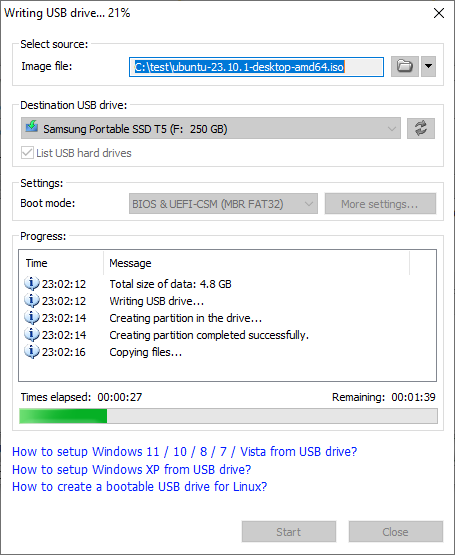
- #Live usb for centos on mac install#
- #Live usb for centos on mac pro#
So, this option will be easier if you use an appropriate external case, and if the original Mac is not hard to work with. a HD from an iMac will not fit into a MacBook).
#Live usb for centos on mac pro#
removing a hard drive from a Mac Pro is a lot easier than removing it from an iMac) and may also depend on the model of your other Mac (e.g. However, choosing this option may depend on the model of your first Mac (e.g. This involves removing the hard drive from the first Mac and inserting it into another Mac or an external case.
Start the first Mac normally (hopefully to see it boot from the OS you just installed). When complete, shutdown both computers and disconnect the FireWire cable between the two Macs. Linux Mint) onto the hard drive of the first Mac in Target Disk Mode (e.g. #Live usb for centos on mac install#
Follow the steps to install the OS (e.g.  Select the bootable USB from the list and press Enter.
Select the bootable USB from the list and press Enter.  Start the second Mac and immediately hold down the Option key until you see the startup disk manager. the one capable of booting from the USB). for Linux Mint) into the second Mac (i.e. (Note: You may need to use an adaptor if the other Mac does not have native FireWire support - e.g. Use an appropriate FireWire cable to connect the iMac to another Mac capable of booting from USB. You'll know when it's finished by seeing an icon floating around the screen. Start the 2007 iMac in Target Disk Mode by holding down the T key during startup. The following is a general guide on what's involved:
Start the second Mac and immediately hold down the Option key until you see the startup disk manager. the one capable of booting from the USB). for Linux Mint) into the second Mac (i.e. (Note: You may need to use an adaptor if the other Mac does not have native FireWire support - e.g. Use an appropriate FireWire cable to connect the iMac to another Mac capable of booting from USB. You'll know when it's finished by seeing an icon floating around the screen. Start the 2007 iMac in Target Disk Mode by holding down the T key during startup. The following is a general guide on what's involved: 
Both options requires access to another Mac that will boot from USB and the second one requires the user being comfortable with the process (in some cases the process would be a nightmare, in others fairly straightforward). Obviously the above options aren't for everyone.
Remove the HD from the destination Mac and insert it into another Mac or external case. Start the destination Mac in Target Disk Mode. I see two ways to install an OS from a bootable USB on earlier Macs that didn't support booting from USB: So I offer this answer in the hope it works for you, but if not, it may help others. I haven't used this process to install Linux Mint, but I have used it to install other operating systems on earlier iMacs and MacBook Pros.







 0 kommentar(er)
0 kommentar(er)
